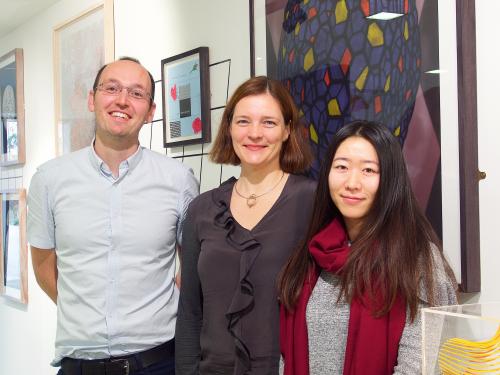
There is compelling evidence that mutations which stimulate the activity of the LRRK2 protein kinase, cause Parkinson’s disease. Orally bioavailable, brain penetrant and potent LRRK2 kinase inhibitors are in the later stages of clinical development. There is also increasing indication that LRRK2 is over-activated in some patients with sporadic Parkinson’s disease. Therefore, there is significant need to develop a robust assay to assess LRRK2 activity in humans.
One way to do this would be to measure phosphorylation of an LRRK2 substrate in a homogeneous cell line derived from a human. This is something that Esther Sammler MRC-PPU scientist and consultant Neurologist at Ninewells hospital set out to achieve.
This task was greatly helped by a recent collaboration between the MRC-PPU and the Michael J. Fox Foundation for Parkinson’s Research, that resulted in the development of a highly selective and potent antibody recognising the Rab10 Thr73 phospho-epitope that is phosphorylated by LRRK2. This antibody, termed MJFF-pRab10 (see here) , readily detects LRRK2 phosphorylated Rab10 in all cell lines and tissues we have analysed.
The next question was what patient derived cell line could be used to monitor LRRK2 activity?
As LRRK2 levels vary widely between cells, it would be very important to select a cell line that is easy to isolate and that also expresses robust levels of LRRK2 as well as Rab10. Blood cells were attractive as these are easy to isolate.
Dr Andrew Howden an immunologist working in Doreen Cantrell’s lab at the University of Dundee, undertook careful analysis of publically available large mass spectrometry databases and discovered that neutrophils had high levels of LRRK2 (~2 x 10 to the 5th copies per cells) as well as Rab10 (2 to 4 x 10 to the 6th copies per cells). Neutrophils are the most abundant white blood cell.
MRC PPU Postdoc Ying Fan (Alessi lab), Esther Sammler and Andrew Howden then worked hard to develop a facile method to isolate 97-99% pure and viable neutrophils form human blood in around 40 min, by exploiting an immune-magnetic negative isolation approach, in which all blood cells other than neutrophils are absorbed onto magnetic beads, leaving only neutrophils in the supernatant. From 20 ml of blood up to 0.5 -1 mg of protein is readily obtained sufficient for many analysis
Using this method to isolate the neutrophils and the MJFF-pRab10 antibody, Ying and Esther could readily quantify LRRK2 kinase pathway activity by measuring LRRK2 mediated phosphorylation of Rab10 in human peripheral blood neutrophils. Only 10 ug of neutrophil extract is needed for this analysis.
Working with Kathrin Brockmann and Thomas Gasser at the University of Tübingen, Ying and Esther were able to demonstrate the feasibility and practicability of using this assay in the clinical setting by studying a small number of patients with G2019S LRRK2 associated and sporadic Parkinson’s as well as healthy controls. Future work is planned to assess LRRK2 activity in a greater number of patients and carriers with pathogenic mutations.
Much previous work studying the LRRK2 signalling pathway has been undertaken using peripheral blood mononuclear cells (PBMCs). We would not recommend PBMCs to assess LRRK2 activity, as they are a heterogeneous population of cells, and only a minority of PBMC cells (monocytes and contaminating neutrophils) express LRRK2. Because of this we find that the level of LRRK2 mediated Rab10 phosphorylation are much lower and inconsistent in PBMCs compared to neutrophils.
While our LRRK2 kinase pathway assay could assist in patient stratification based on LRRK2 kinase activity, we envision that it may find greater utility in pharmacodynamic and target engagement studies in future LRRK2 inhibitor trials.
We anticipate that our LRRK2 neutrophil activity assay could have utility in future clinical trials to 1) assess LRRK2 pathway activity in Parkinson’s patients, 2) identify patients displaying elevated LRRK2 kinase activity and 3) monitor pharmacokinetics and target engagement of administered LRRK2 inhibitors.
To read a copy of the LRRK2 neutrophil activity assay paper click here {http://www.biochemj.org/content/early/2017/11/10/BCJ20170803}.

